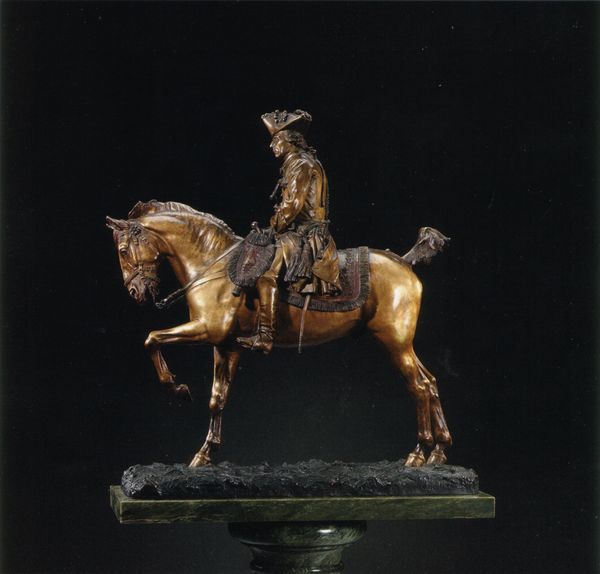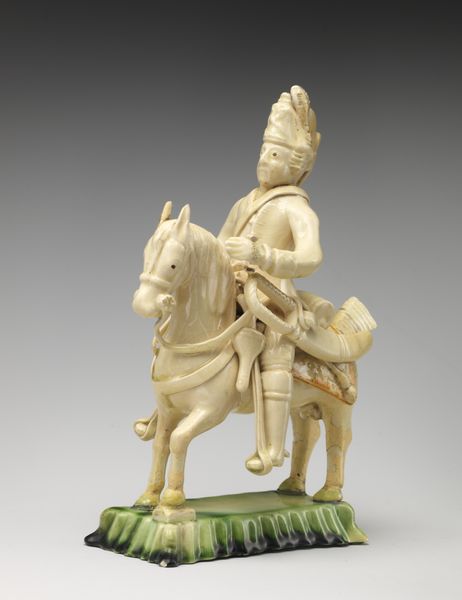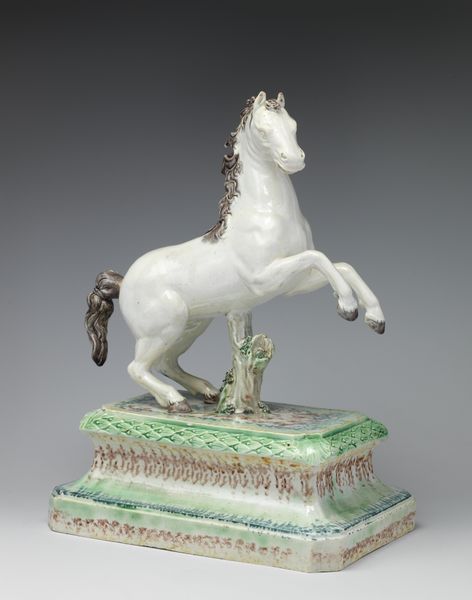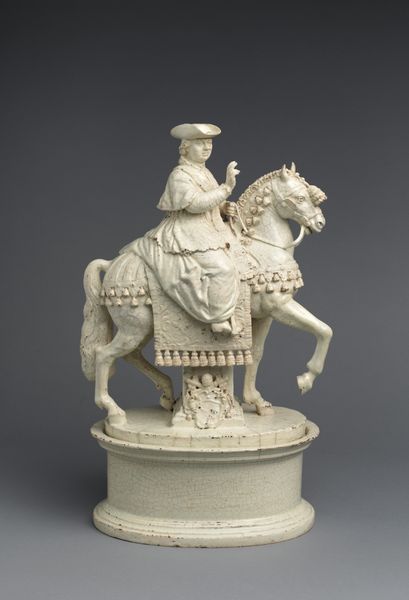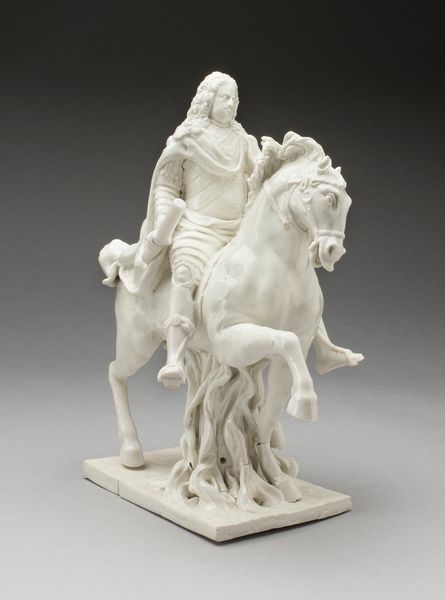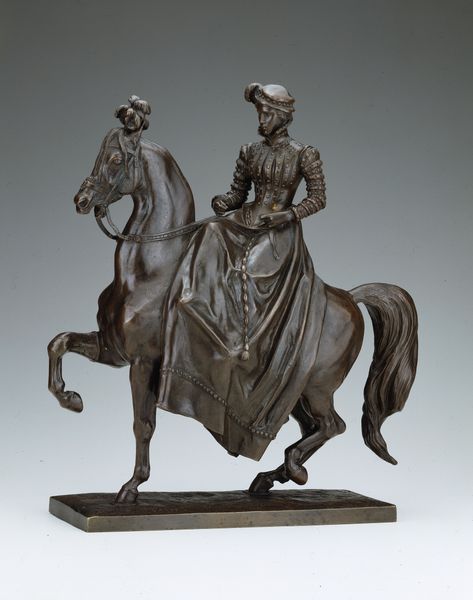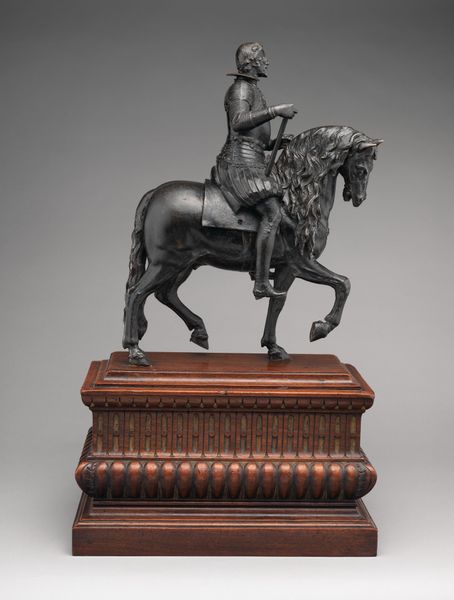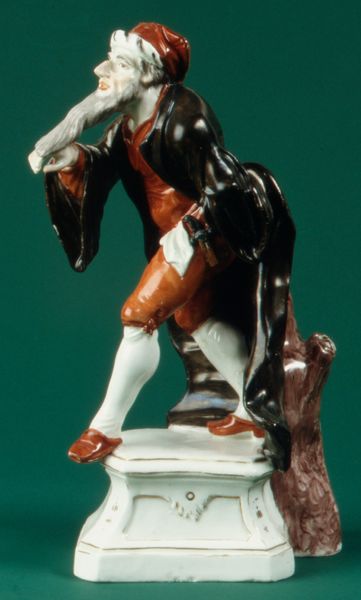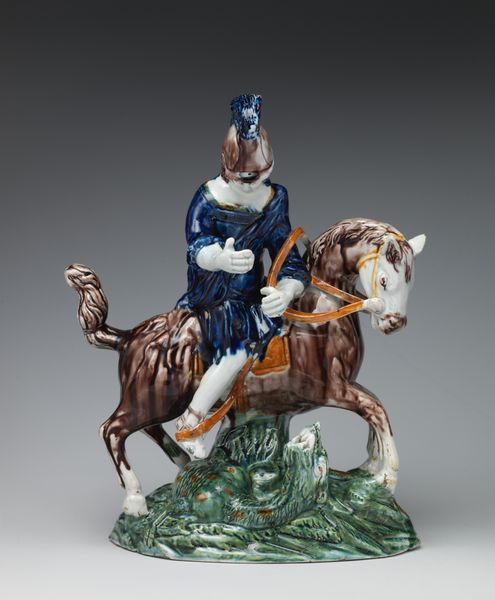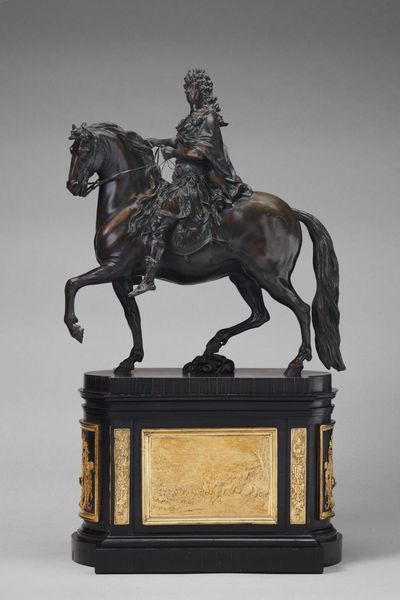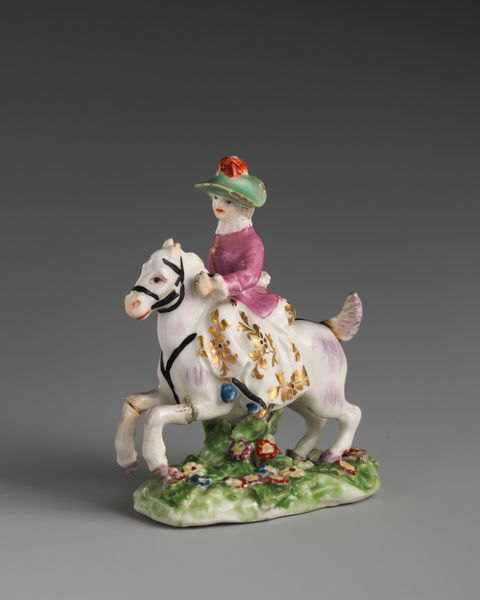
ceramic, sculpture
#
neoclacissism
#
ceramic
#
figuration
#
sculpture
#
history-painting
#
decorative-art
Dimensions: Height: 14 in. (35.6 cm)
Copyright: Public Domain
Ralph Wood the Younger created this approximately 14-inch tall earthenware figure of William III as a Roman emperor sometime in the late 18th century. Note how Wood uses color and form to convey power and authority. The statue's composition guides the eye upwards from its solid rectangular base, along the horse’s muscular body, culminating in the figure of William III, perched high. This perspectival strategy employs scale to suggest dominance. Brown mottled glazes and the textured surface of the horse contrast with William's idealized form. Here, his face and classical garb in shades of green and brown are rendered with smooth, even glazes. William's attire, inspired by Roman emperors, and the rearing horse, symbolic of strength, place him within a lineage of powerful rulers. The classical references do more than evoke authority; they serve as a potent semiotic tool, aligning William III with the virtues of ancient Rome and legitimizing his place in British history.
Comments
No comments
Be the first to comment and join the conversation on the ultimate creative platform.
